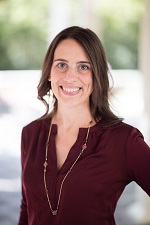By Deborah Ottman
In previous posts on creating online learning experiences for adults, Associate Director of Professional Development Deborah Ottman emphasized the importance of keeping your particular audience in mind as you determine the goals and learning objectives of your training or course. She also talked about structuring the learning experience—what she calls “finding a flow.” In her most recent post, she discussed fostering learner engagement and a sense of community online. In this final post in the series, which is intended for subject matter experts, Deb shows how assessment can both gauge students’ learning and build on it.
For subject matter experts and students alike, assessment can seem like something of a chore. I often think this harks back to the test anxiety that many of us have felt at one time or another when faced with a final exam or a standardized test. Yet assessment is integral to learning, and I’d argue that an assessment itself presents a great opportunity for learning to take place. The goal of an assessment should be to support and extend authentic learning. This is true whether you are designing a professional development training or an online course for degree-seeking students.

There are two general categories of assessment: formative and summative. Formative assessment happens on a regular, ongoing basis. Summative assessment takes place at the close of a section of the course or at the close of the course itself. In both instances, assessment allows the instructor to evaluate, measure, and document the strides students have made, as well as to uncover where additional learning needs may be. Moreover, formative assessment yields important information that the instructor can use to adjust instruction as the course progresses. It also provides ongoing feedback to learners, be it a percentage of correct answers on a quiz, a letter grade on a paper, or a reflective written response to a discussion post.
It’s helpful to start thinking about how assessment will be accomplished while you are gathering and organizing content. To kick start that process, I’d suggest circling back to the course goal(s) and learning objectives that you formulated at the outset. One of our guiding questions was:
What do the students need to learn?
The course goal(s), along with the learning objectives connected to achieving each goal, represented your answer to this question, and your answers shaped your content selections. They can serve the same purpose here. Let’s add another guiding question that is specific to assessment:
How can learners provide evidence that they’ve achieved the goal(s) and objectives?
I’m not talking about choosing between a multiple-choice and a true-or-false quiz, or an essay question versus a discussion board prompt. Let’s think more broadly. When considering professional development, we know that adult learners need to feel new content will be useful to their work role, so assessments should reinforce the practical application of the content. Subject matter experts will want to incorporate activities that permit learners to flex their new skills and apply their new knowledge. This can happen either out in the “real world” or through relatable tasks, scenarios, or case studies that are included in the course materials. This is known as authentic assessment.
Consider this helpful definition from education consultant Grant Wiggins, author of “Healthier testing made easy: the idea of authentic assessment”:
What do I mean by “authentic assessment”? It’s simply performances and product requirements that are faithful to real-world demands, opportunities, and constraints. The students are tested on their ability to “do” the subject in context, to transfer their learning effectively.
The best assessment is thus “educative,” not onerous. The tasks educate learners about the kinds of challenges adults actually face, and the use of feedback is built into the process. In the real world, that’s how we learn and are assessed: on our ability to learn from results.
Authentic assessment boosts knowledge acquisition by asking learners to apply their new knowledge to activities that mimic professional situations and settings. Recall that this also is a factor in strengthening learner engagement; this kind of assessment is a true win-win.
As you think about the “what” and “how” of measuring students’ learning, it’s helpful to work with an instructional designer if possible to learn about the wide variety of tools and technologies that are available. Alignment comes into play once more. When evaluating an assessment tool, you’ll want to consider its validity—that is, whether it actually measures the learning it is supposed to measure. It’s worth taking time to thoughtfully pair the mode of assessment with the knowledge or skills being assessed. That way, not only can the assessment itself be called authentic, so can the learning!



